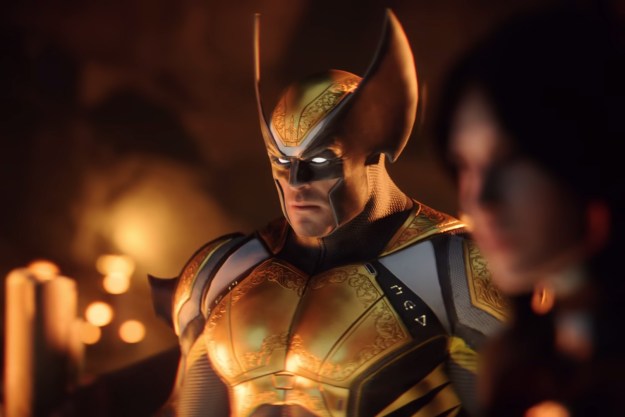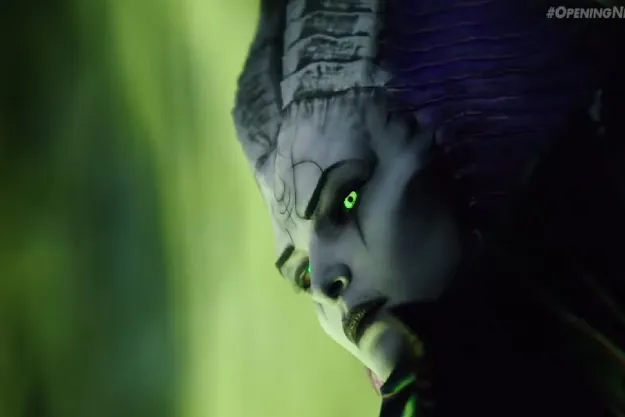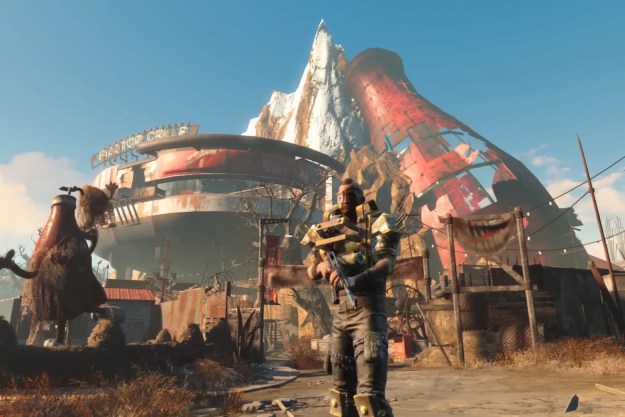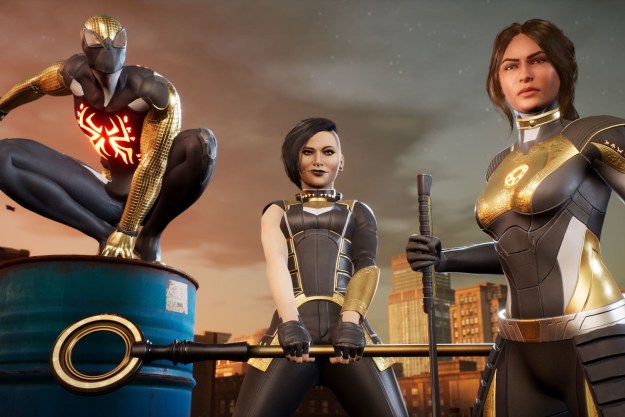
- Entertaining story
- Deep friendship systems
- Approachable, deep card combat
- Optional open-world exploration
- Stale combat arena design
- Confusing objectives
Over the past 15 years, comic book fans have been lucky enough to see their favorite superheroes turn into household names thanks in no small part to the Marvel Cinematic Universe and a selection of DC comics adaptations. Though when it comes to video games, only the biggest heroes like Spider-Man and Batman have gotten that same spotlight. That’s changing with Marvel’s Midnight Suns. It’s a strategy RPG that follows both iconic Avengers characters and more obscure supernatural ones as they take on Lilith, Mother of Demons. Players can walk around and mingle with the other heroes between missions, while its turn-based strategy gameplay stands out from Firaxis’ previous titles by putting the focus on card-based abilities.
Marvel’s Midnight Suns goes for depth in everything it does, whether that’s its Persona-like character friendship system, Abbey exploration, or card-based tactics. It’s a meaty 40-hour RPG starring a wide variety of Marvel characters — not just the biggest names — that tells a supernatural story with a villain we haven’t seen yet in the MCU. This is all a major shift for developer Firaxis, which typically makes systems-based strategy game series like XCOM and Sid Meier’s Civilization, but the change mostly works.
While its map design is oddly stale compared to the rest of the experience, the characters, story, and combat shine. It’s an approachable strategy game with exploration and interactions that more casual players can focus on, but it also retains the depth of strategy found in any Firaxis title. You can see many of its featured characters elsewhere, but no other media outside of the comics themselves does it quite like Marvel’s Midnight Suns.
Hello darkness, my old friend
Unlike previous Firaxis games, the narrative in Marvel’s Midnight Suns is just as front and center as the gameplay here. Players control a brand new character called The Hunter, who happens to be the child of Lilith. The hero, who can either be male or female, was raised by a witch called The Caretaker 300 years ago and died killing their mother. The Hunter ends up being reawakened by the Avengers and the lesser-known Midnight Suns, a fledgling supernatural superhero team, after the fascist organization Hydra resurrects Lilith.
The adventure is full of the twists and turns one would expect from a comic book-inspired narrative.
From there, a globe-trotting adventure to stop a magical apocalyptic event ensues, with players taking on corrupted villains like Venom and Sabertooth and corrupted heroes like Scarlet Witch and The Hulk. The adventure is full of the twists and turns one would expect from a comic book-inspired narrative, which makes it a lot more carte blanche about using tons of Marvel characters, popular and obscure, than some other Marvel games that feel quite limited in what they use.
Lilith doesn’t actually confront the heroes in person that much, but she still provides a sinister backdrop for the game’s events. Despite their powers, our heroes struggle to defeat Lilith’s forces for most of the game, adding to the stakes and drama of the narrative. The supernatural side of the Marvel universe has yet to be explored nearly enough outside of comics, and Marvel’s Midnight Suns entertainingly delves into this segment of the universe without going full horror.

Despite being a customizable player character, The Hunter is a compelling character in their own right as they struggle with having to kill their mother, but find solace in the found family of the Midnight Suns. For the most part, Marvel’s Midnight Suns does take its narrative seriously, though the writing sometimes takes cues from the MCU and comic book writer Brian Michael Bendis in that every character can become a comedic quipping machine if need be. While that occasionally gets annoying, especially with more serious characters like Captain Marvel and Caretaker, the characters have more than enough depth to make up for it.
I’ve come to talk with you again
When it comes to crafting individual relationships with each featured superhero, Marvel’s Midnight Suns goes way deeper than something like Marvel’s Avengers. The Hunter can talk with and sometimes hang out with each character between missions to increase their friendship level and learn more about them. Increasing friendship levels even unlocks new cosmetics and powerful combo cards that deal massive damage.
Even well-trodden characters like Doctor Strange get a lot of insightful time in the spotlight over the course of this 40-hour RPG.
Players can speak or compliment characters they see around the Abbey, the game’s main hub, but there are also various Abbey Clubs — like a book club made up of Blade, Captain Marvel, Captain America, and Wolverine — that players can join. These increase the friendship levels with these characters, give further insight into their personalities, and feature some of the most entertaining character work in the game.
While Marvel’s Midnight Suns might be a strategy game during missions, it’s also a full-fledged character-driven RPG on the level of something like Dragon Age: Origins or Persona 5 in-between missions. This is the most fleshed-out I’ve ever seen some of the characters, namely Magik. She slowly opens up to new friends throughout the game after closing everyone off due to trauma from her childhood. Even well-trodden characters like Doctor Strange get a lot of insightful time in the spotlight over the course of this 40-hour RPG.
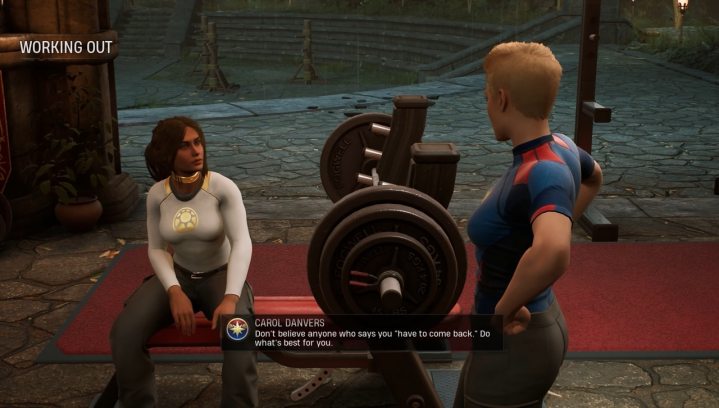
While lifetime comic book fans like myself are spoiled with content nowadays, Marvel’s Midnight Suns is still one of the most comprehensive gaming experiences for many of its starring characters. It undoubtedly proves that RPGs are one of the best video game genres for superheroes, and we just haven’t gotten enough of them since the days of X-Men Legends and Marvel Ultimate Alliance in the 2000s.
The hubbub between missions
Most of those character interactions occur in The Abbey, the central hub of Marvel’s Midnight Suns where players hang out before and after missions each day. In the Abbey building, players can interact with other heroes, redeem currencies like Gamma Coils and Blueprints for new cards, send allies on Hero Ops for additional rewards, upgrade and mod cards, research new items, make Abbey and costume upgrades, and more. It’s even somewhat customizable as players can choose which pictures to display around the Abbey and purchase and customize furniture for The Hunter’s room.
For something entirely optional, The Abbey is a dense open area where players can spend hours exploring at their leisure.
While I recommend redeeming and upgrading cards between missions at the Abbey, everything there is technically optional. If you’re coming to Marvel’s Midnight Suns just for the strategy game experience, players can complete the whole game without ever straying too far from that building if they want. If players choose to do that, though, they’ll miss out on a lot of content.
Some features like the Forge and Hero Ops are limited to being used just in the morning, which can be frustrating when you get important mission rewards. Still, that encourages the player to hang out with the other characters and explore the grounds surrounding the Abbey. During the Abbey segments, Marvel’s Midnight Suns plays from a third-person perspective, and The Hunter can explore the Abbey grounds as thoroughly as they want.

They can find chests with cosmetics, the Arcane Keys to unlock them, items to craft with, and more. There’s also a side story featuring Agatha Harkness and Caretaker that delves more into Lilith’s backstory and the elder gods behind it all. Completing that side story will require the player to explore almost the entirety of the Abbey grounds, earning them new abilities to open paths along the way. For something entirely optional, The Abbey is a dense open area where players can spend hours exploring at their leisure.
The map could be clearer about indicating where certain objectives are, though, as it can be hard to navigate to specific points or know where the game wants you to grow in some instances. I could see the annoying segments of exploration causing people to ditch this part of the game altogether. Walking animations here are stiff, which compounds the fact that the game isn’t much of a looker, though it’s certainly not outdated. Regardless, it’s impressive that Firaxis packed a miniature open-world experience into this turn-based strategy game.
Play your cards right
Once you’re in a fight, Marvel’s Midnight Suns becomes a turn-based tactics game where cards are the primary source of character attacks. Players must build up Heroism with attack and support cards to gain access to powerful Heroic abilities. Each turn, players start with three Card Plays, two Redraws, and one opportunity to move a character. It’s an easy-to-understand system that packs in a lot of depth.
Each hero has a unique set of cards, ranging from Common to Legendary in rarity. Each card has some unique keyword; some of the most common include Quick, which refunds a card play, and Taunt, which causes an enemy to focus their next attack on that character. On top of that, each character’s cards fulfill a particular RPG niche, and players can customize their eight-card decks to ensure they fill those roles.
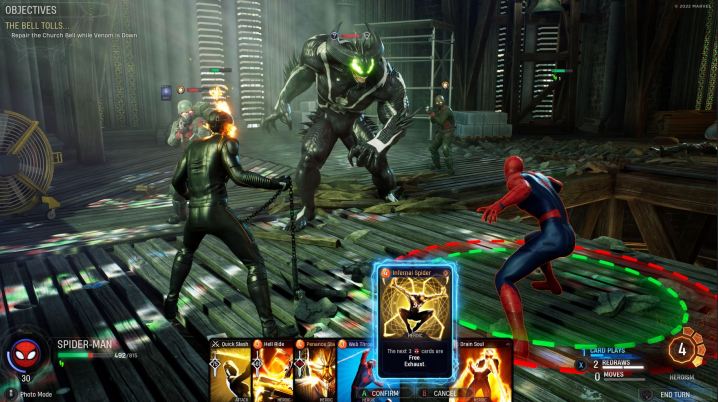
For me, Captain America was a tank that could build up lots of extra Block in addition to his health. Captain Marvel was one of my main attackers as she could go Binary after three of her cards were played and gain even more strength. Other characters are a little more gimmicky or rely on gameplay mechanics. Nico Minoru’s Roulette card keyword randomizes the nature of some of her abilities, while Iron Man’s card can gain some extra keywords after they are redrawn. The Hunter can go in three different directions based on Light, Darkness, and Balanced skills. Players can upgrade cards and mod them throughout the game, adding even more abilities into the mix with each card play.
Coupled with flashy animations, these cards feel like they are showcasing abilities coming from a powerful superhero. At times, I was knocking out four or more enemies with one card. Marvel’s Midnight Suns can still be a challenging game, hpwever, especially on the tougher difficulties. If you don’t literally play your cards right, your heroes can sustain an injury that debuffs them in their next battle. It’s a different kind of tactics than XCOM, but there’s a lot of rich strategy to determining which cards are the right to play each turn. Do you want to spend a turn on weaker Attack and Support abilities to build up Heroism? Will you situationally use Knockback to take out two enemies with one card play? Or do you want to deal as much damage to a boss enemy (who has two lives) as possible during one turn?
Levels blend together toward the end of the adventure.
There are a lot of important decisions to be made each turn, making it feel a bit more similar to games like Slay the Spire. Players can move their characters around each turn, but that’s only helpful when trying to position characters for an area-of-effect attack or pushing one enemy into another for an extra attack during a turn. There are also various objects in the environment, like rocks to throw or explosive barrels to blow up, that players can use at the cost of one or two Heroism.
Unfortunately, this leads to the biggest issue with Marvel’s Midnight Suns: map design. All levels in the game are functionally the same large circle with some interactable environmental objects at equidistant points around the map. While it’s still possible to move characters around these levels at least once per turn — and making smart use of positioning and environmental attacks is helpful in fights — every Marvel’s Midnight Suns arena functions similarly. That’s not to say there isn’t map variation; there are a lot of different settings to fight Hydra and Lilith’s forces in and some unique maps like Limbo to shake things up.
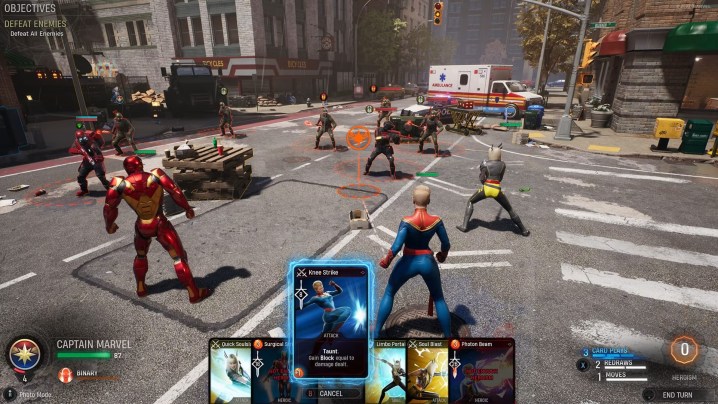
The real issue is that no matter the window dressing, almost every level feels the same: a circle with four or five interactable objects within it. It’s like how there are hundreds of variations of Monopoly boards, but at its core, it’s often the same game, albeit a fun one, no matter where you play. With a shorter runtime, this might have been less noticeable, but at over 40 hours, levels blend together toward the end of the adventure. It also means that Marvel’s Midnight Suns feels less infinitely replayable than the XCOM games, even if it has a New Game+ mode.
But even at a time where Marvel is more popular than ever, Marvel’s Midnight Suns finds a way to stand out by going the extra mile. The boring level design and issues with Abbey exploration can dampen an otherwise fantastic experience, but my appreciation for these characters and the well-thought-out nature of the card-based combat encouraged me to play until the final hours.
As played out as Marvel is at this point, Firaxis didn’t just cash in with a Marvel skin for XCOM. It decided to make something unique and established a new superhero RPG formula that I hope isn’t a one-time thing.
Digital Trends reviewed Marvel’s Midnight Suns on PC via a Steam build provided by 2K.
Editors' Recommendations
- Marvel’s Midnight Suns for Nintendo Switch canceled ahead of last-gen launch
- Marvel’s Midnight Suns gift guide
- Marvel’s Midnight Suns: 6 tips and tricks to get started
- Marvel’s Midnight Suns delayed, moving it out of a busy October
- Marvel’s Midnight Suns arrives in October with Spider-Man and Scarlet Witch



